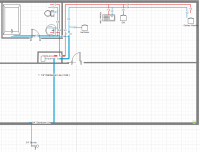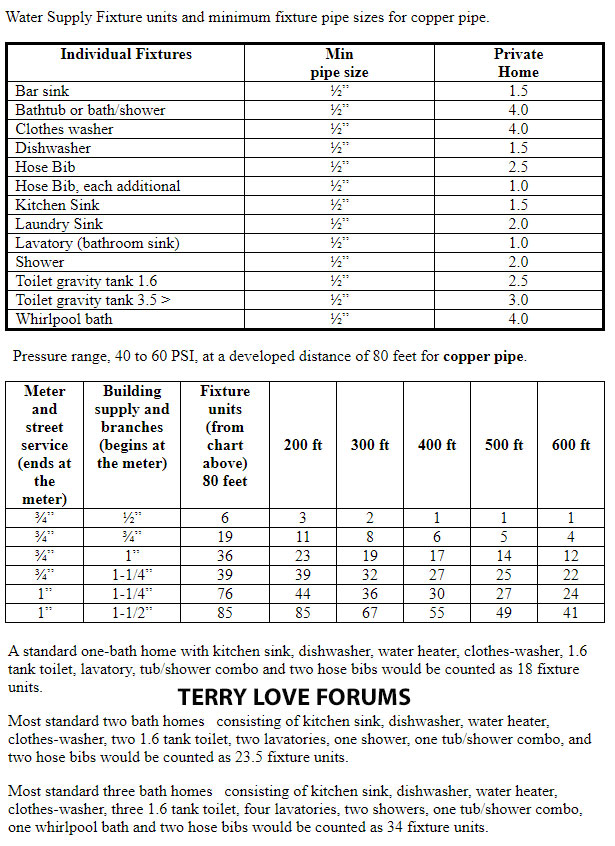Supernal_Pipe
New Member
2009 IPC Table E201.1 - Fixture Unit Values
I'm currently doing a remodel, and the owner is asking me to size up the lines to accommodate an additional bathroom, and kitchen.
House currently has a 3/4 inch service pipe, and that same 3/4 inch size is currently extended as the Distribution pipe to all other fixtures in the house.
( branch system )
According to Code, a 3/4 inch service pipe, expanded up to a 1 1/4" distribution pipe at 60 feet of developed length will give me an additional 24.5 WSFU. (32 - 7.5)
Which is what i need to handle his proposed load.
My question is, why does this work?
Code says it will work, but how does adding a length of bigger pipe ( 1 1/4 inches ) after the city supplied 3/4 inch pipe allow for 24.5 more wsfu ??
Is it simply that the larger pipe segment increases pressure for everything after the larger pipe size?
The table lists maximum development length, however, to have the needed effect, is there a minimum pipe length for increasing the diameter to provide the additional wsfu's?
I assume i can add a segment of 1 1/4 inch pipe after the hot water heater to provide more "fixture unit value's" for the fixtures downstream?
If yes, how long should that segment be?
I'm currently doing a remodel, and the owner is asking me to size up the lines to accommodate an additional bathroom, and kitchen.
House currently has a 3/4 inch service pipe, and that same 3/4 inch size is currently extended as the Distribution pipe to all other fixtures in the house.
( branch system )
According to Code, a 3/4 inch service pipe, expanded up to a 1 1/4" distribution pipe at 60 feet of developed length will give me an additional 24.5 WSFU. (32 - 7.5)
Which is what i need to handle his proposed load.
My question is, why does this work?
Code says it will work, but how does adding a length of bigger pipe ( 1 1/4 inches ) after the city supplied 3/4 inch pipe allow for 24.5 more wsfu ??
Is it simply that the larger pipe segment increases pressure for everything after the larger pipe size?
The table lists maximum development length, however, to have the needed effect, is there a minimum pipe length for increasing the diameter to provide the additional wsfu's?
I assume i can add a segment of 1 1/4 inch pipe after the hot water heater to provide more "fixture unit value's" for the fixtures downstream?
If yes, how long should that segment be?


